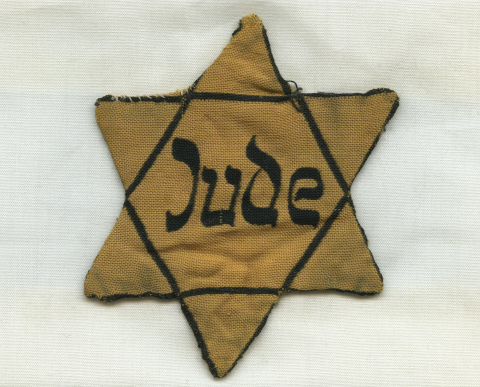Holocaust Statistics & Facts
The Holocaust (or Shoah) was the genocide of European Jews by Nazi Germany and its collaborators, resulting in the murder of approximately six million Jewish people. The term "statistics and facts" encompasses the documented, verifiable data on the scale of the destruction—including the number of victims, the identities of the perpetrators, the timeline of persecution and murder, the methods of extermination, and the demographics of the destroyed communities. These facts are derived from vast archival evidence, including Nazi documents, survivor testimonies, population records, and forensic analysis of mass graves and killing sites.
Star of David Belonging to Toni Meumann | Public domain image of holocaust, no known copyright restrictions
Beyond the six million Jewish victims, it is crucial to include the hundreds of thousands of others deemed "racially inferior" or political opponents by the Nazis: Soviet prisoners of war (around 3 million killed), Polish non-Jewish civilians (around 1.9 million killed), Sinti and Roma (up to 500,000 killed), persons with disabilities (around 200,000 killed in the T4 Euthanasia program), Jehovah's Witnesses, and homosexual men. The detailed study of these statistics, facts, and the extensive archival evidence is fundamental to historical documentation, ensuring accurate remembrance, countering denial, and providing crucial data for historical and genealogical research.
Shoah Courseware (Free) 📚
- The Holocaust – an Introduction
- The Holocaust: an Introduction – (sponsors Yad Vashem- Tel Aviv Univ.)
- The Holocaust (Advanced) The Open University
Key Statistics & Facts Sources 📊
- The Holocaust – Statistics & Facts
- United States Holocaust Memorial Museum (USHMM): Holocaust Encyclopedia - Introduction to the Holocaust
- Yad Vashem: Frequently Asked Questions about the Holocaust
Links 🔗
- Austrian Victims of the Holocaust
- BYU Harold B. Lee Library Shoah (Holocaust)
- Card File of the Jewish Population in the Protectorate Bohemia and Moravia
- Center for Jewish History Digital Collections
- Das Zentrum für Jüdische Kulturgeschichte (ZJK)
- Digital Monument to the Jewish Community in the Netherlands
- Documents Related to the Holocaust and Refugees, 1933-1945 | Franklin D. Roosevelt Presidential Library & Museum
- erinnern.at (Austria Memory)
- European Holocaust Research Infrastructure (EHRI)-Countries
- Forced Labourers and the Water Works Camps in the Lublin District
- Fortunoff Video Archive for Holocaust Testimonies
- Holocaust Education and Archive Research Team
- Holocaust Memorial Center
- Holocaust Resistance: Jewish Resistance to the Nazi Genocide
- Holocaust Teacher Resource Center
- International Institute for Jewish Genealogy and Paul Jacobi Center
- JewishGen
- Jewish Krakow genealogical documents
- Jewish Virtual Library
- Leo Baeck Institute
- Lvov ghetto – spring of 1942
- Memorial Buch (Bundesarchiv)
- Memorial de la Shoah, Paris
- Memorial Steinhof- the War against the “Inferior“. On the History of Nazi Medicine in Vienna
- Museum – synagogue complex in Wlodawa
- Museum of the History of Polish Jews
- Musee de la Resistance et de la Deportation/Museum of French Resistance and Deportation
- Memorial de la SHOAH
- National Socialism, the Holocaust, and World War II (Union College)
- Struthof-Natzweiler
- New York Public Library -" Yizkor Books
- Online Finding Aid on Nazi Camp History
- Orchestra of the Janowska Camp in Lvov
- Remember.org – a cybrary of the Holocaust
- Shoah Victims™ Names Recovery Project
- Tauber Holocaust Library
- The Memorial Book of the Federal Archives for the Victims of the Persecution of Jews in Germany (1933-1945)
- The Nizkor Project
- The Simon Wiesenthal Center
- The Virginia Holocaust Museum
- USC Shoah Foundation Institute – Testimonies of the Holocaust
- US Holocaust Museum
- Victims of the Nazi Holocaust- geni.com
- Virtual Shtetl
- Voices of the Holocaust
- Warsaw Property Restitution
- Yad Vashem- Jewish Resistance
Credits
Compiled by Mark Rabideau, Opa & Professional Genealogist.
